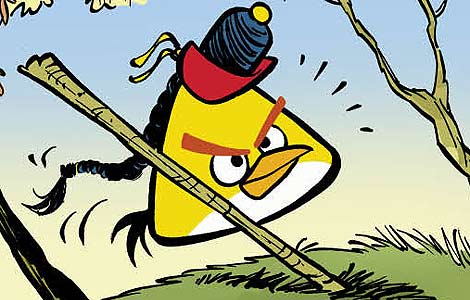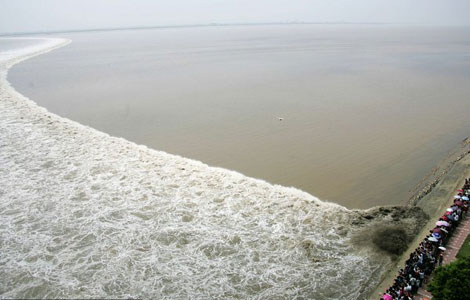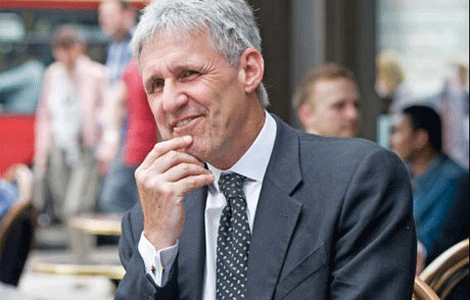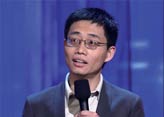Ethnic Games more than a multi-ethnic sports gala
Updated: 2011-09-14 18:35
(Xinhua)
|
|||||||||
GUIYANG - Japanese anthropologist Tsuneo Sogawa found it so fascinating that the faculty of sports science has visited China's National Traditional Games for Ethnic Minorities for five times in 20 years.
"As far as I know, the Chinese national ethnic games are the largest of such events with the most extensive coverage in the world," said 63-year-old Sogawa, department head of Sports Science and Academy of Waseda University.
"It has been an impressive and convincing success for China in searching and digging and reviving the extinguishing or already lost treasures of the country's ethnic sports," he said.
 |
|
Special coverage: |
Different from other five multi-sports national games of China, the ethnic games have not a single Olympic sport on the program but fit up the most with the Olympic spirit, which emphasis for the cultural differences and understanding.
The Games gathers China's 55 ethnic groups, which account for about 8.49 percent of the country's population of 1.37 billion besides the largest nationality the Hans, and has long been reckoned an important presence in maintaining the 55 ethnic groups' own rich traditions and customs.
Most events of the ethnic games take their source from daily life of the specific ethnic groups.
Stilts running race, introduced to the games as a medal event at the last Ethnic Games in Guangzhou with all the contenders being required to run on stilts in the special sprint event, was initially a Miao sport in Hunan province where ancient people walk on stilts to escape from the frequent floodwater.
Title event swing is a popular leisure activity for women of various ethnic groups especially the Koreans, while top-whipping is an entertainment in Southwest China and horse racing is most favored by ethnic groups in North China like Mongols and Manchu, who're called "the ethnic groups living a life on the horsebacks".
Some of the sports hold strong flavors of geographical features.
Broadsword-walking is a daredevil sport practiced by an ethnic minority in Southwest China as bare-footed performers walk up on a 20-meters-long flight of stairs made up of edge-sharp broadswords, while two-man tug-of-war is a Tibetan specialty.
There're also title events like dragon-boat racing, shuttle-cock kicking, ice hockey-like wooden ball, pearl ball, as well as firecracker-catching, an action-packed sport nicknamed "Chinese rugby".
"Single Bamboo Drifting", originating from northern Guizhou province from local people's transportation method, was the latest lucky one to be introduced to the just unveiled Guiyang games as a title event. Barefoot athletes take to the water on 7.5-meter-long bamboo poles and maintain their stability as they glide across the surface of natural water.
In the 58 years history of Ethnic Games, the event contributed a lot in actual efforts as well as in social appeals to preserve traditional ethnic sports, which is apparently a meaningful achievement even in a global sense.
With the main cauldron lit by Olympic boxing champion and Guizhou native Zou Shiming after a very local charactirized broadsword-walking style climb on Saturday, China's Ethnic Games kicked off its ninth version in capital city Guiyang of Southwest China's Guizhou province.
It is for the first time that the ethnic sports gala is held in Guizhou, which makes home of 17 native minority nationalities besides the largest nationality the Hans.
The nine-day grand event has attracted more than 15,000 participants including over 6,700 athletes for a total of 16 title events and 188 demonstration events, a historic progress from the game's first edition with only 395 athletes from 13 ethnic groups competing for five medal events and three demonstrations.
For both participants and spectators, the ethnic games are more like a multi-ethnic carnival and a demonstration of national unity of China, with every version of the event sparing a whole day for party.
Also it's greatly promoted the integration and mutual understanding, as a Tibetan wrestler won the Korean-style wrestling or a Uygur athlete took a Tibetan-style event comes out a common scene.
"Some ethnic sports have been spread to various ethnic groups because of the national ethnic games, " said Dongye, a professor with the Hubei Ethnic Nationalities Institute.










